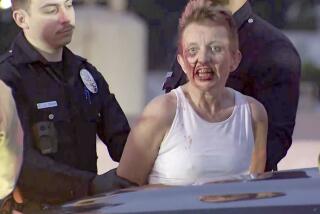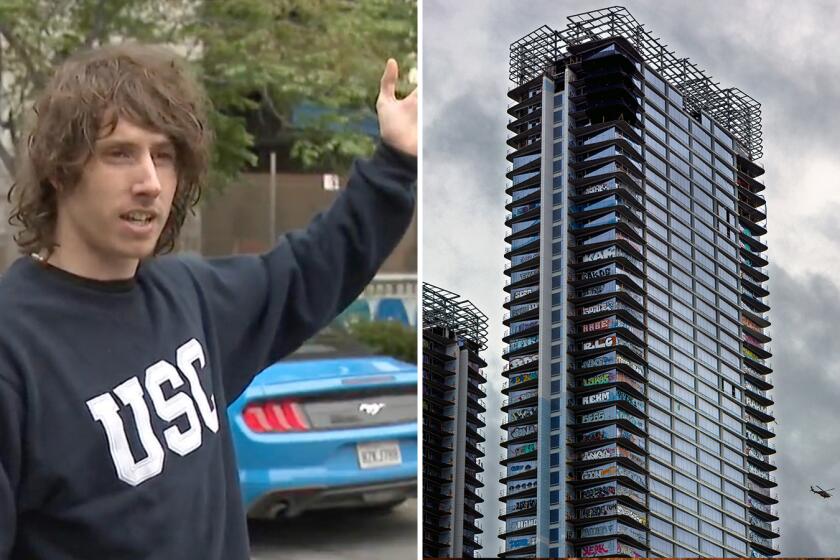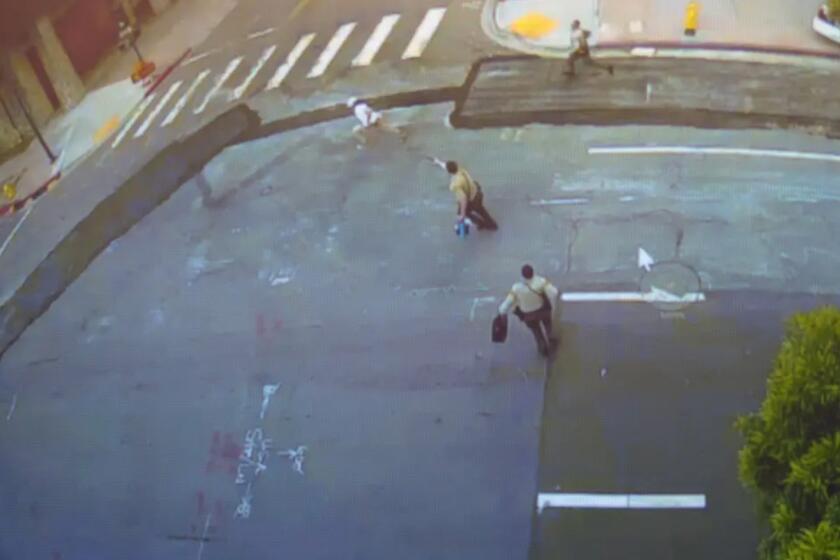Fillmore Digs In and Gets Back on Its Feet
At 10 a.m. on Jan. 17, 1994, Roy Payne stepped out of Fillmore City Hall and began to survey the damage.
The city manager had raced to work minutes after the 6.7-magnitude Northridge earthquake hit, arriving in the dark to help direct emergency operations. It was not until more than five hours after the temblor shook Southern California that Payne got a good look at the town he had been running for five years. “I was totally blown away by the amount of devastation I saw,” he said.
Grim numbers would emerge in the following hours and days. A total of 33 businesses, 80 homes and 117 mobile homes were red-tagged as uninhabitable. Scores of other businesses and homes received moderate damage.
Total monetary losses: $250 million.
But residents and merchants quickly began rebuilding, and 10 years later, the city is still “the Last, Best Small Town in Southern California,” the town’s official slogan, Payne said. In fact, Fillmore has a new City Hall, a rebuilt downtown and the same solid sense of community that the town of 14,000 has prided itself on for decades.
The city began using the slogan shortly before the quake, and the words quickly became its mantra. In fact, during the rebuilding effort, the fire chief put the slogan on the marquee of the downtown’s sole theater, and “we’ve used it as a rallying point ever since,” Payne said.
The theater, built in 1916 and considered a city treasure, incurred major damage in the quake. But residents didn’t want to lose it. “People were concerned about it being torn down,” Payne said. “It had historic value.”
The city decided to buy the theater and refurbish it. Now it shows first-run movies seven days a week, along with Spanish-language movies on Sunday afternoons.
It took about two years to reopen the theater, twice as long as much of the rest of downtown. Most of the merchants were back within a year, Payne said.
“With several buildings, you could look at photographs from the ‘30s and ‘40s and look at them today and you’d be hard-pressed to tell the difference,” he said.
Merchants spent the year during the reconstruction under a tent put up in Central Park. Only two businesses left during that year, Payne said.
Spiffing up downtown even more is Fillmore’s new City Hall, which was in the planning stages before the quake.
Plans changed, since the city had hoped to move into the Masonic Temple destroyed in the quake. But the town ended up with a new showplace, funded in part with federal money obtained after the quake. The new City Hall opened in December 1996.
When the quake hit, Roger Campbell was mayor pro tem, assistant chief of the Fire Department -- and suddenly homeless, his turn-of-the-century residence rendered uninhabitable.
But he didn’t lose heart.
“Sometimes opportunities come out of devastation,” said Campbell, who rebuilt his house within months. “The quake was also a grand opportunity [for the city] to redefine and restore ourselves.” Both Campbell and Payne agree that one of the lasting legacies of the quake is that an already close community became even closer.
“Residents and businesses came together to work together after the earthquake,” Payne said. “They had a real appreciation for each other. And we know that if there’s another emergency, the community will always come together to help each other.”
More to Read
Start your day right
Sign up for Essential California for news, features and recommendations from the L.A. Times and beyond in your inbox six days a week.
You may occasionally receive promotional content from the Los Angeles Times.






